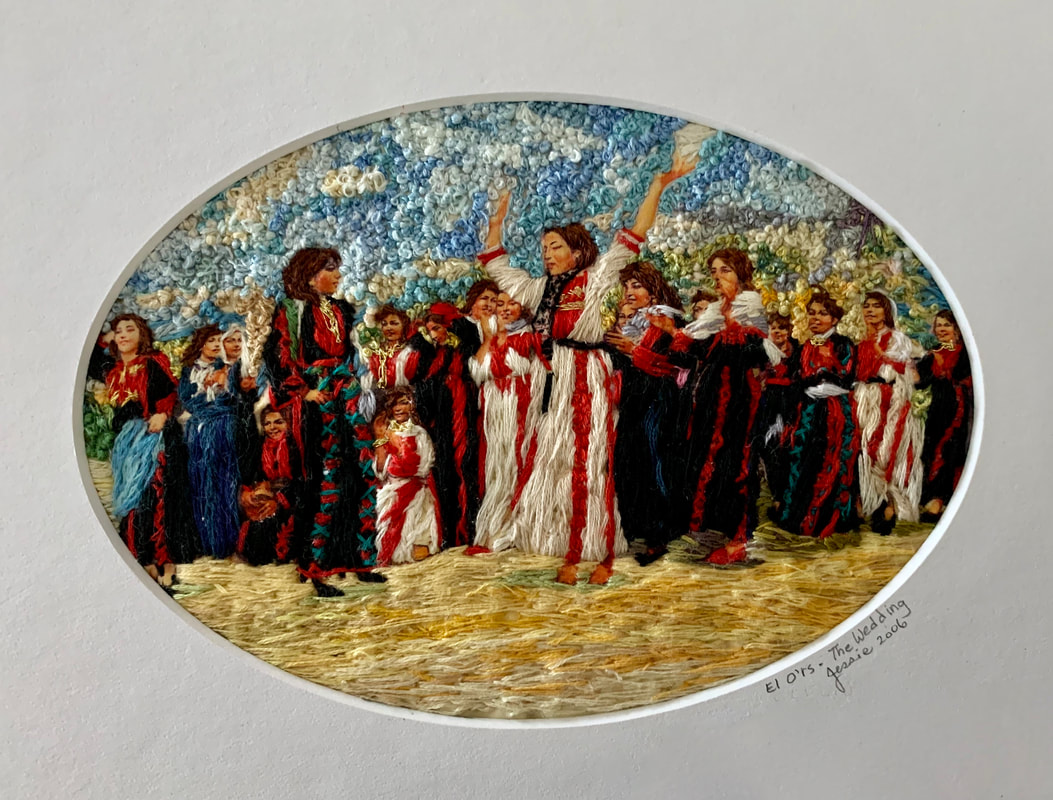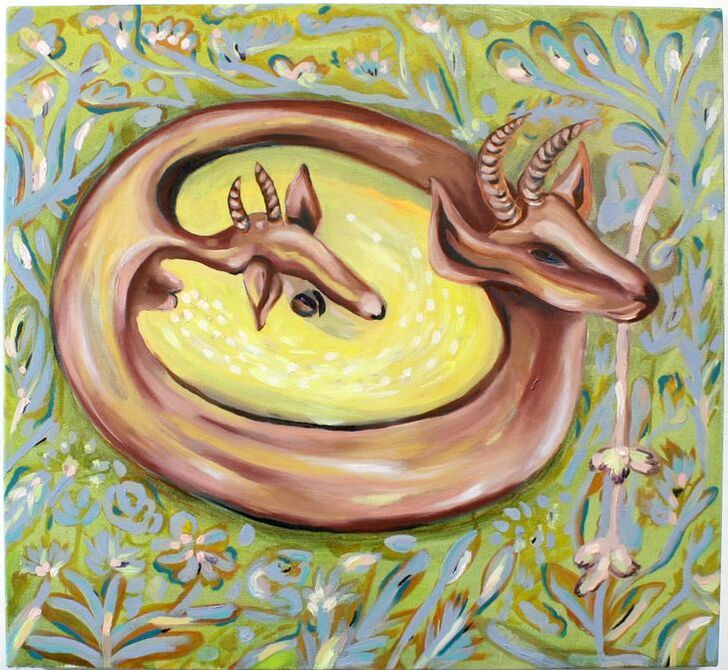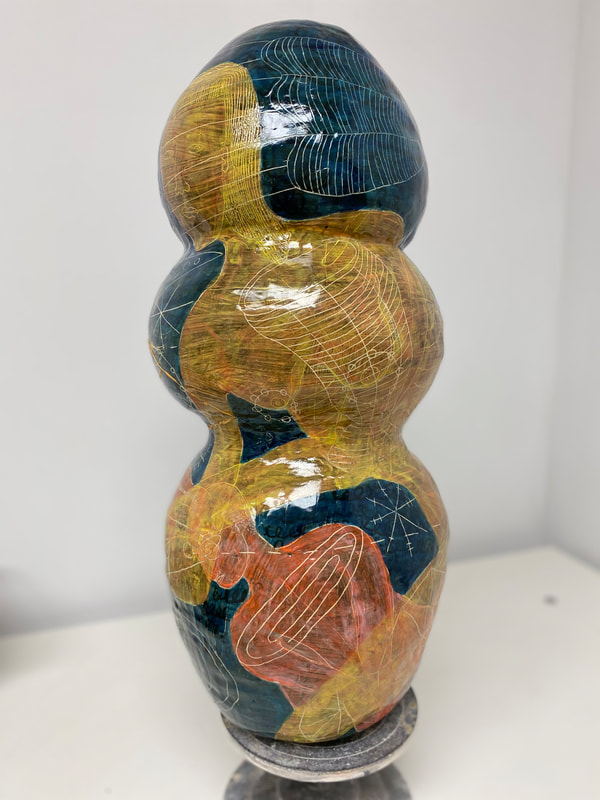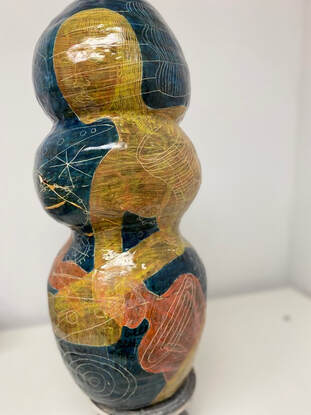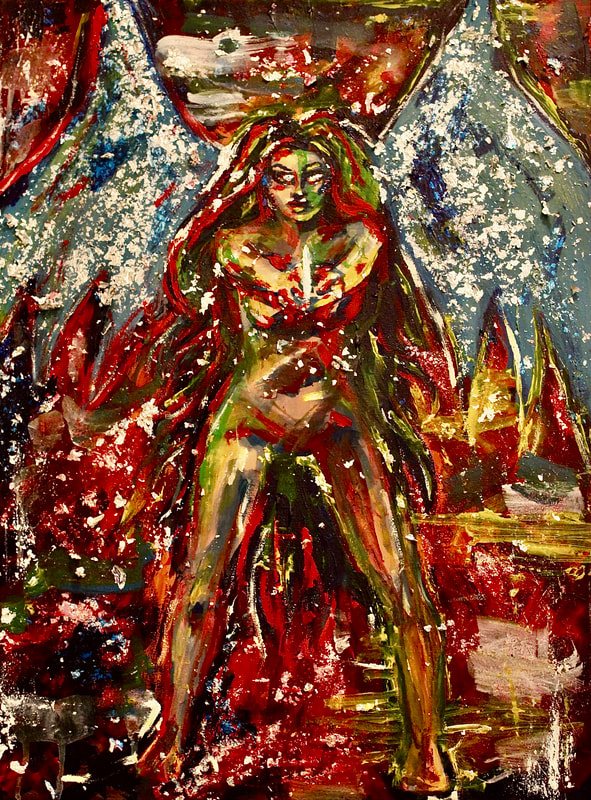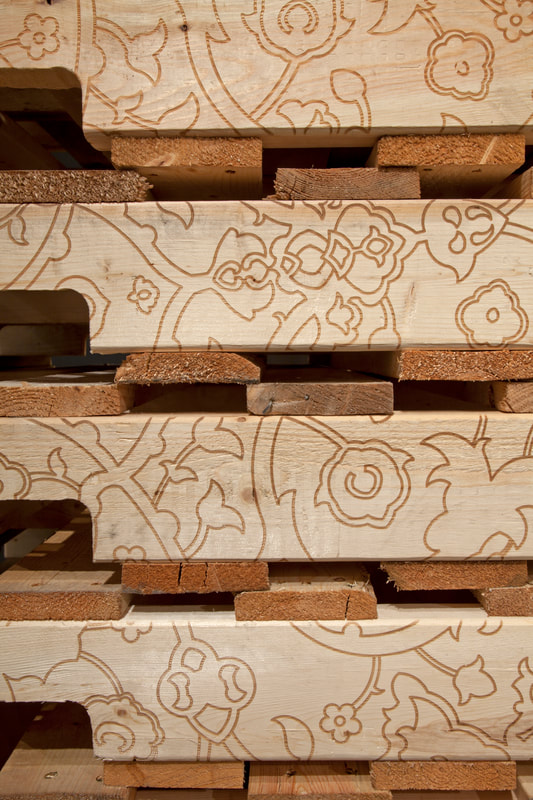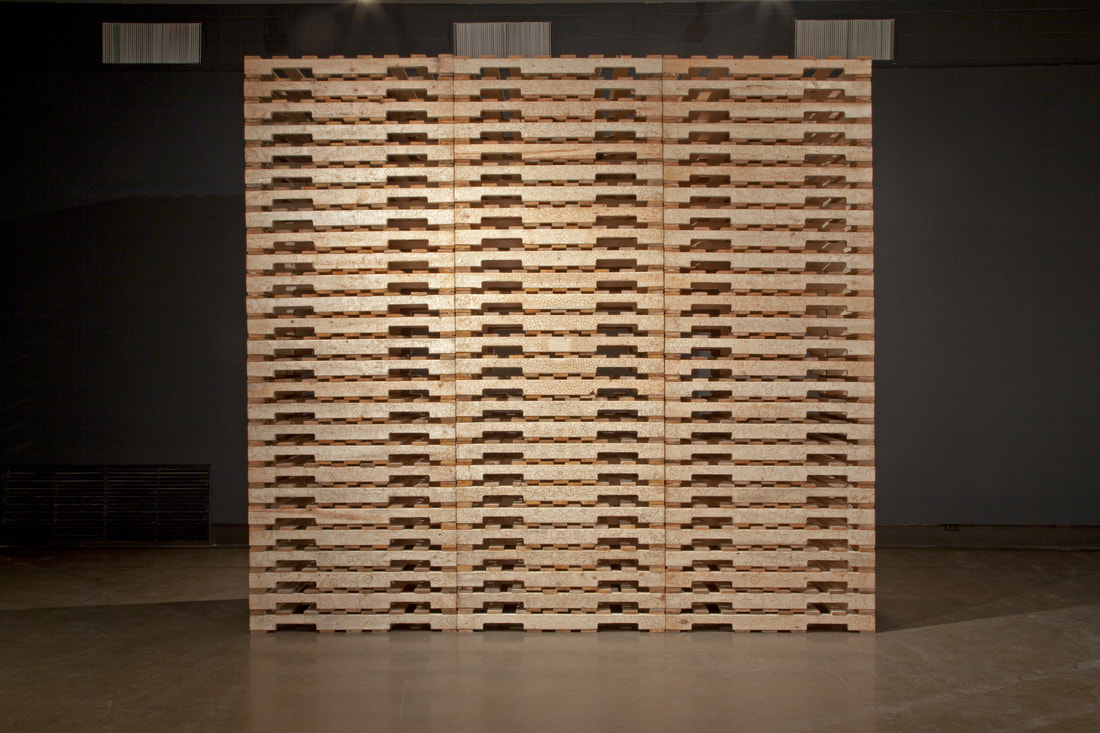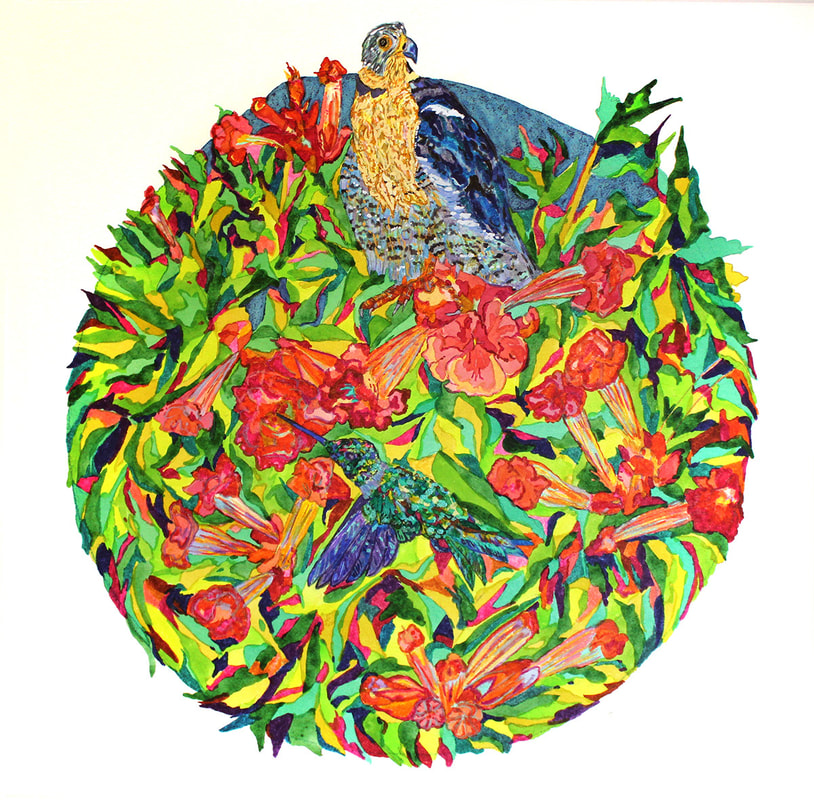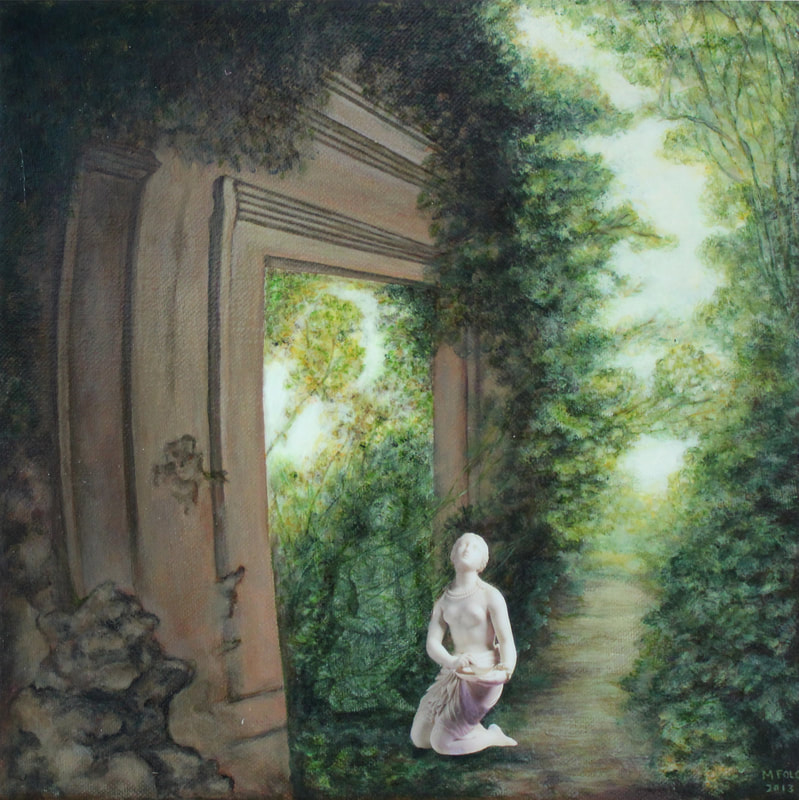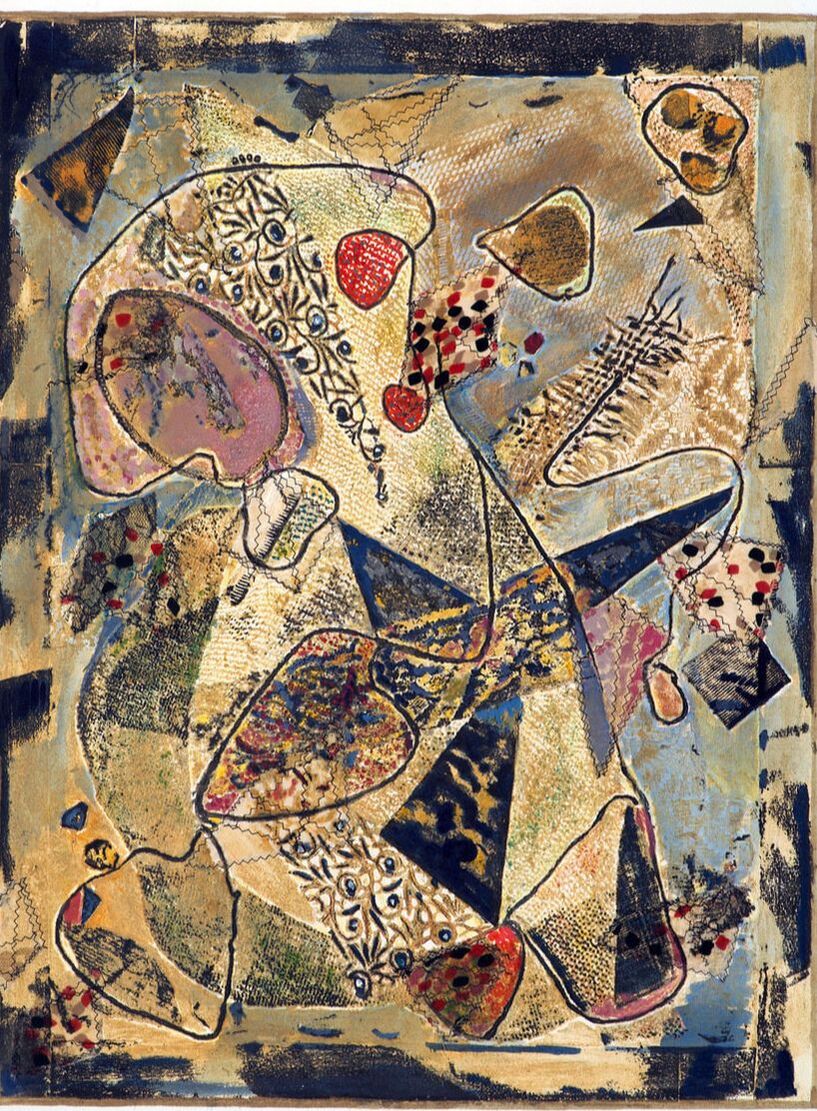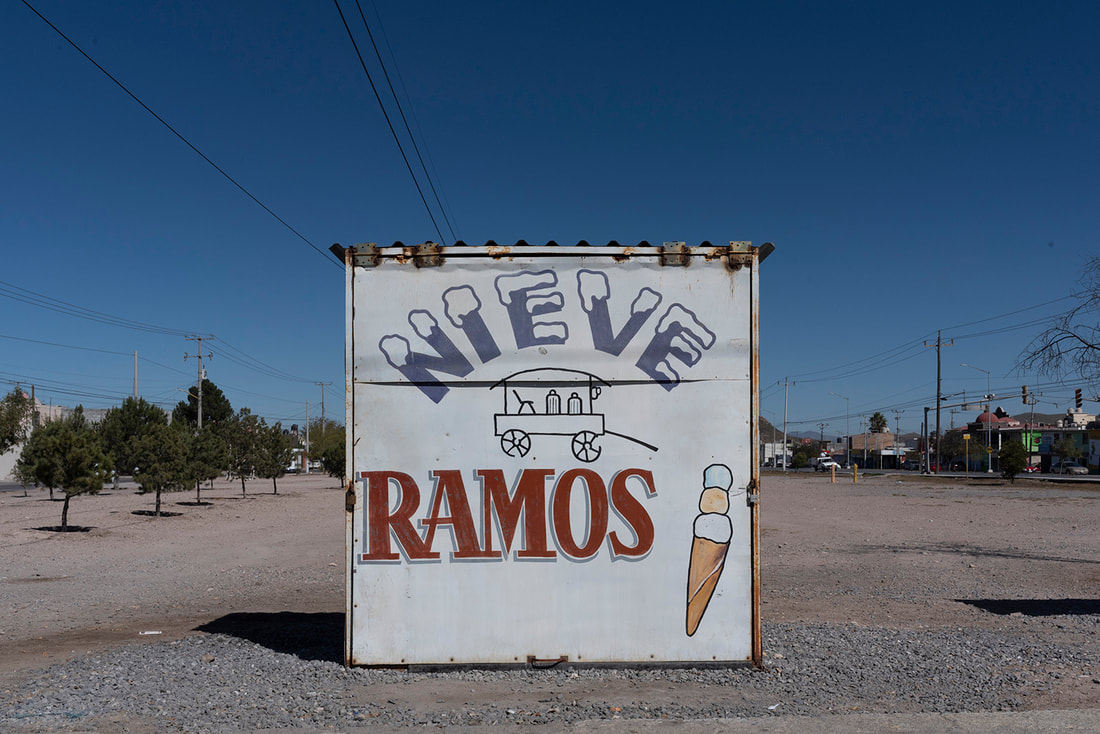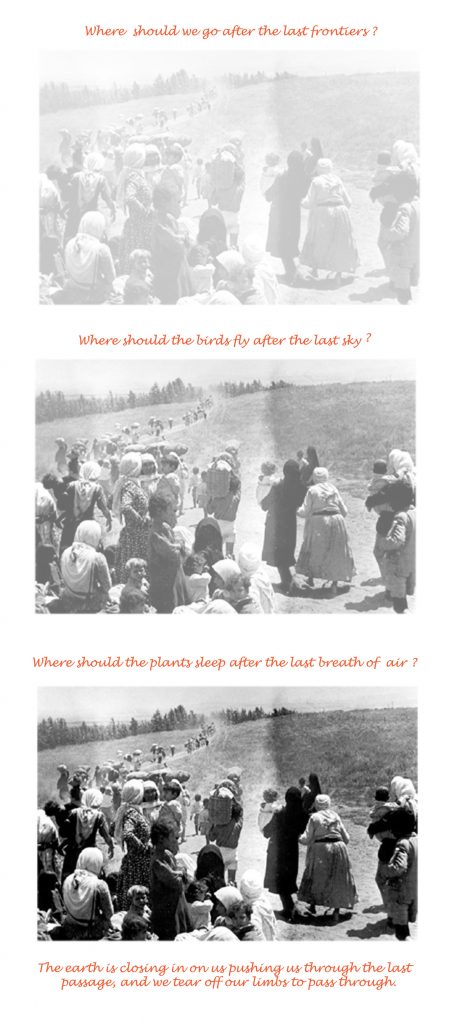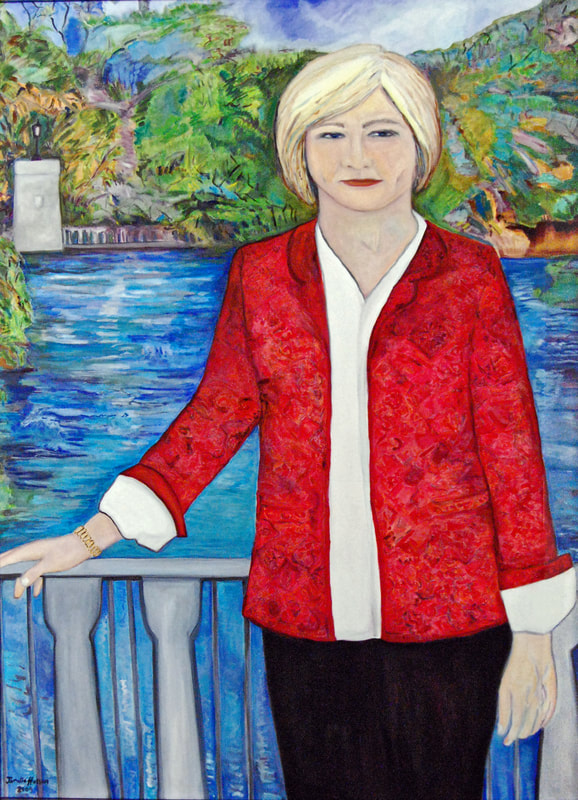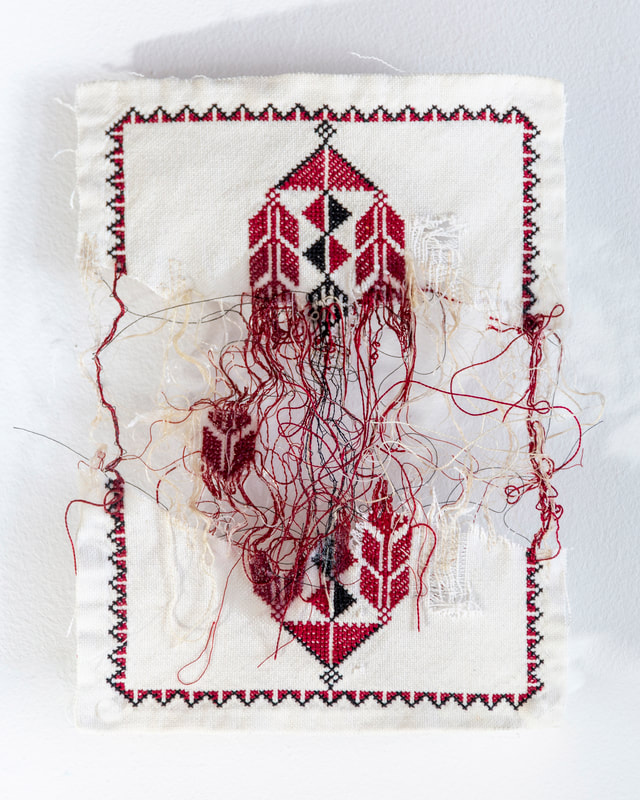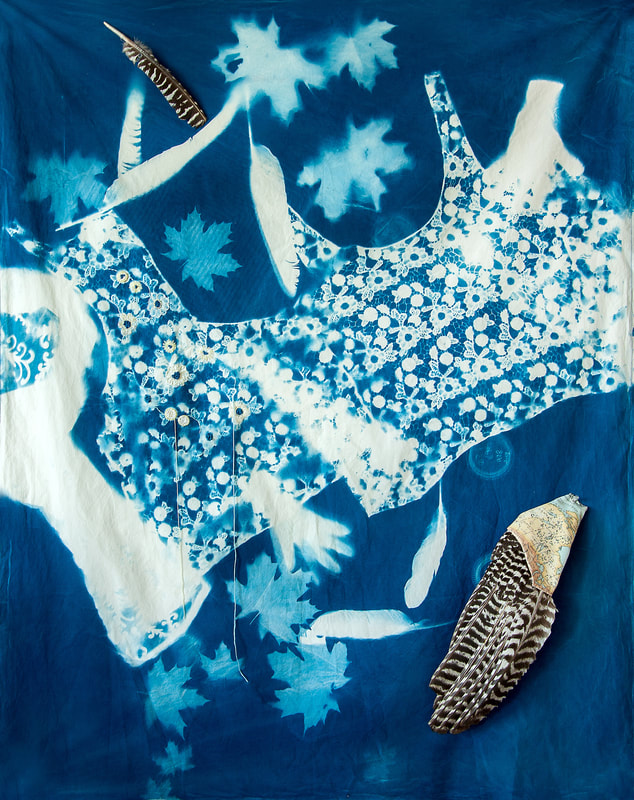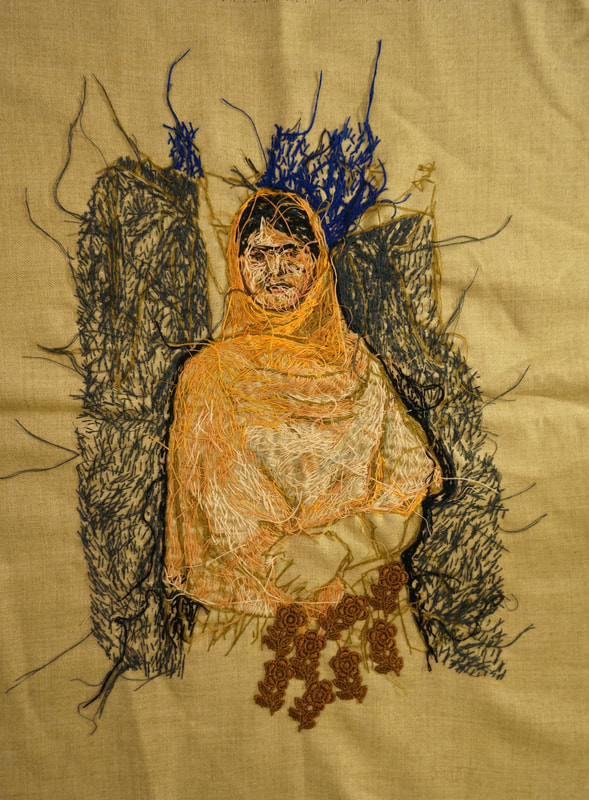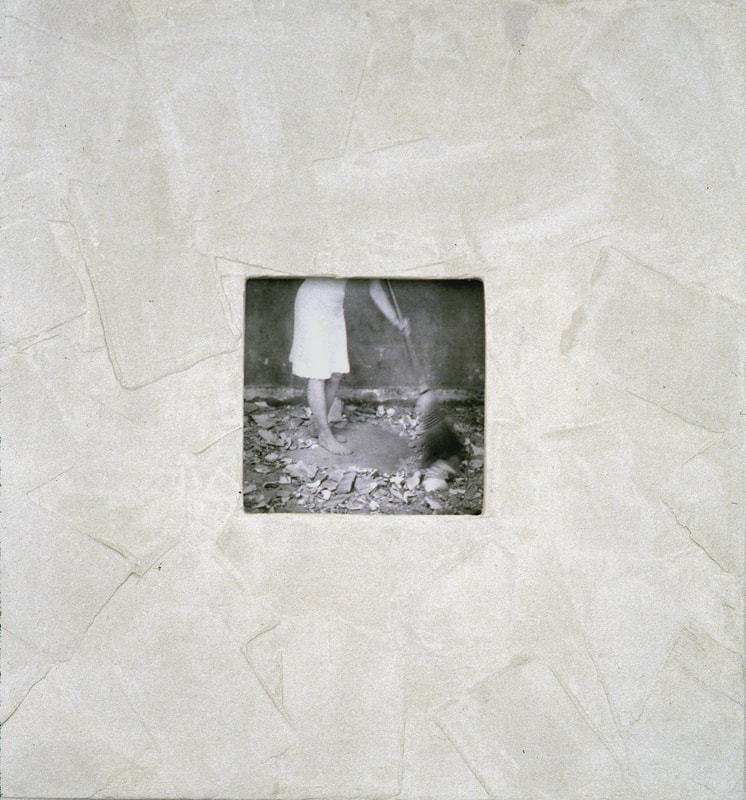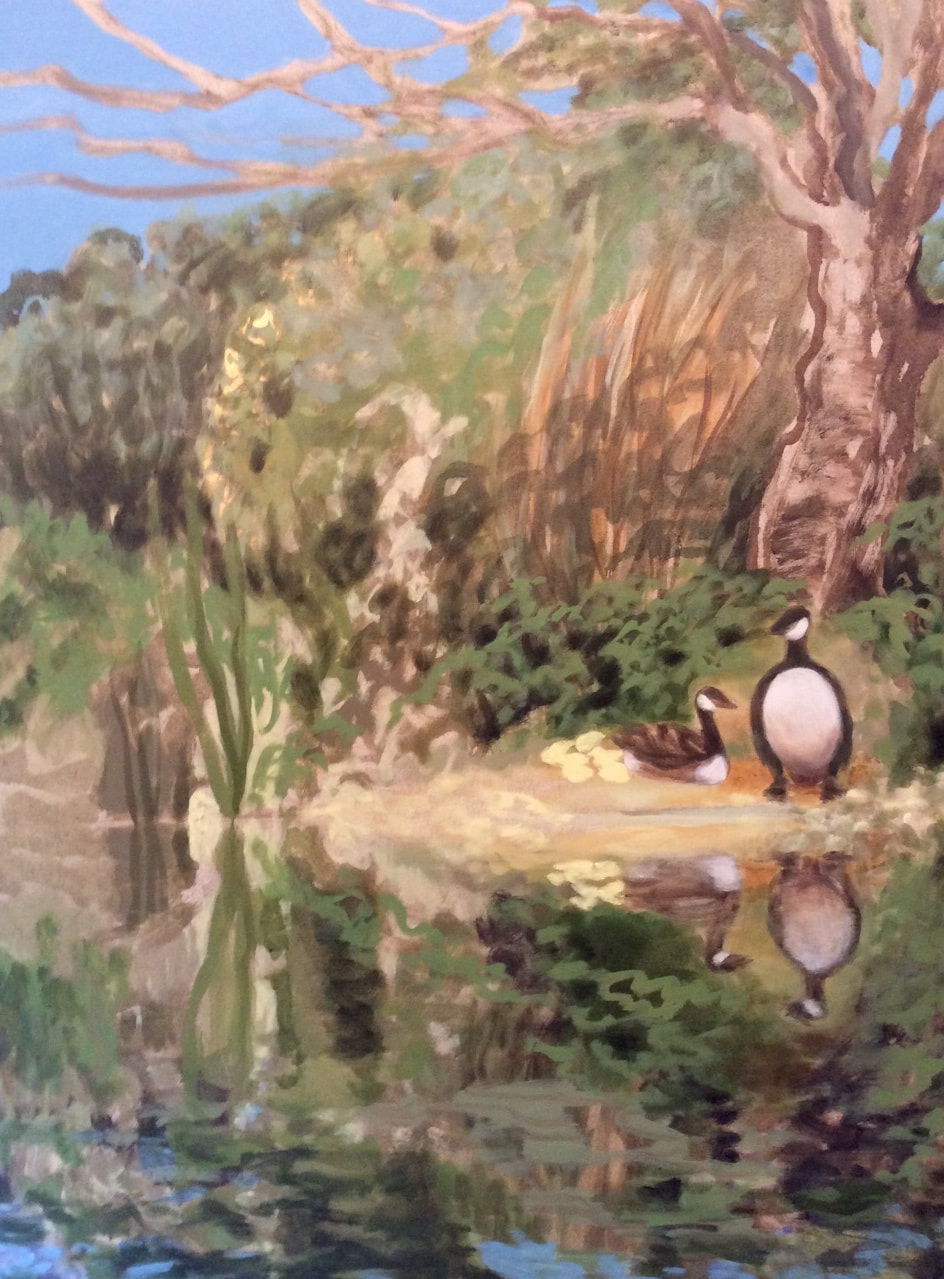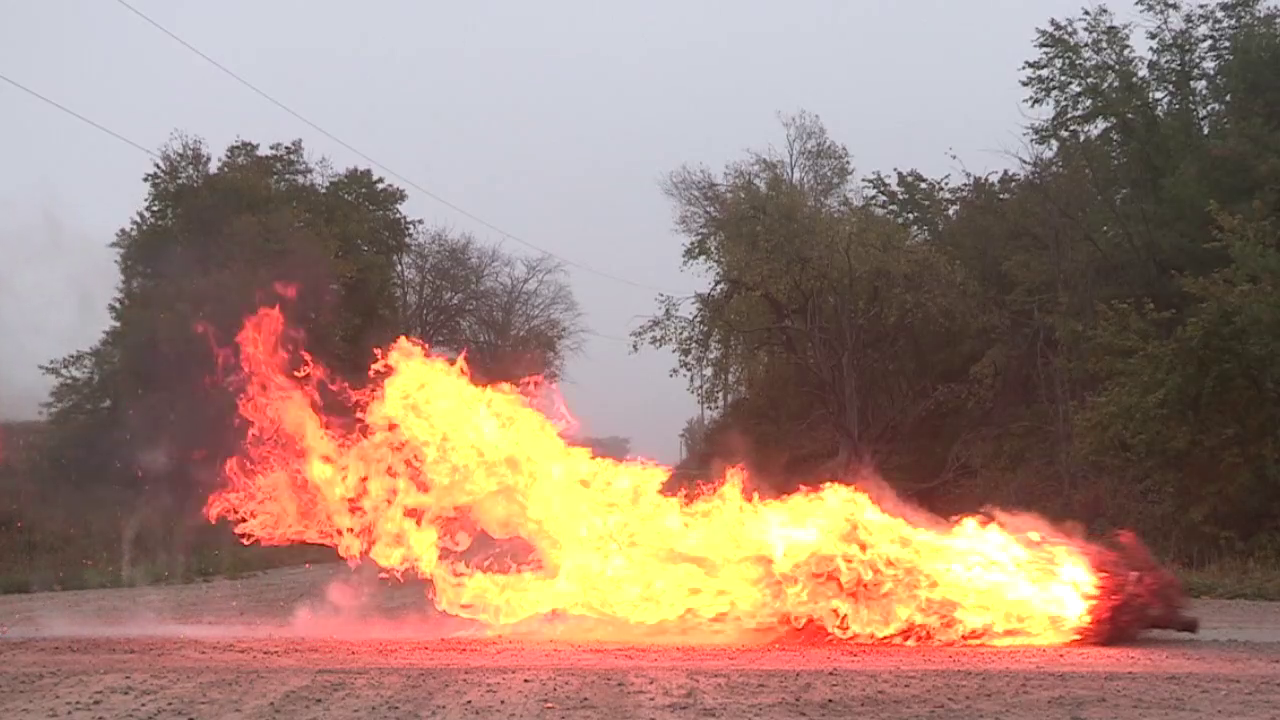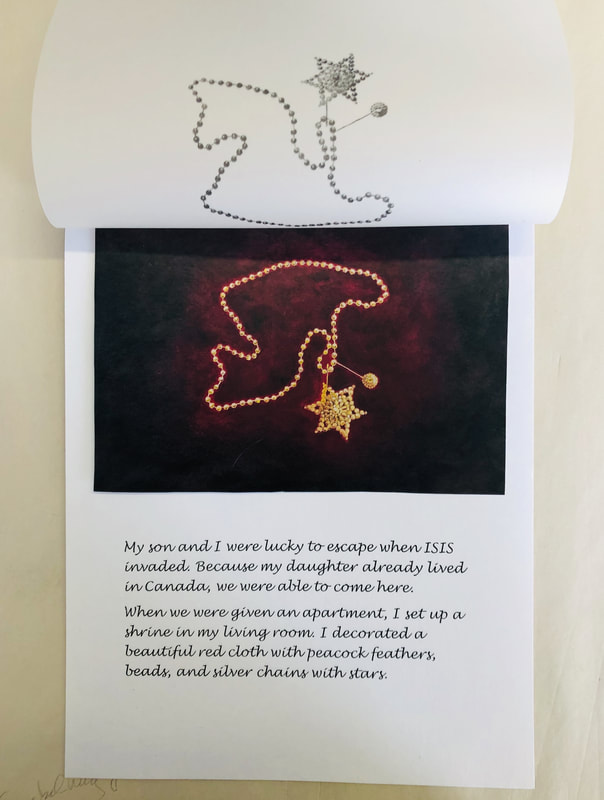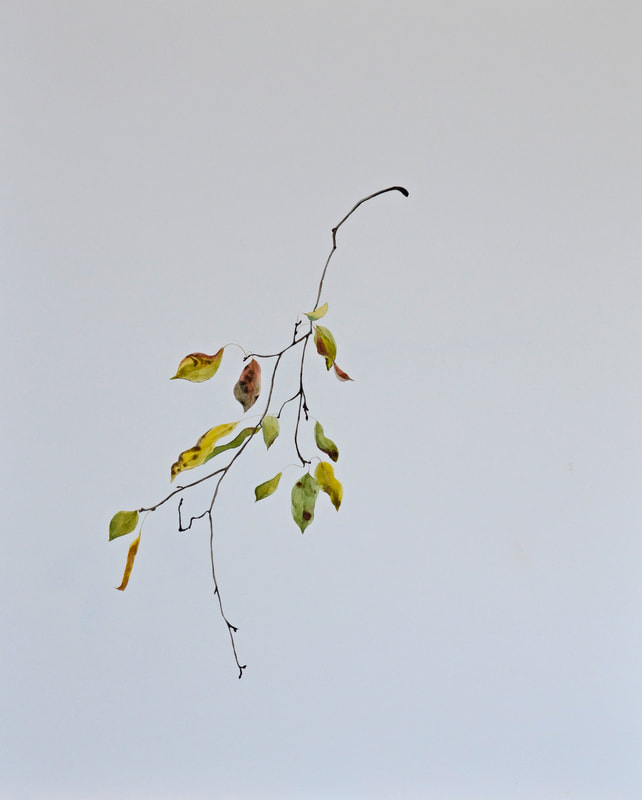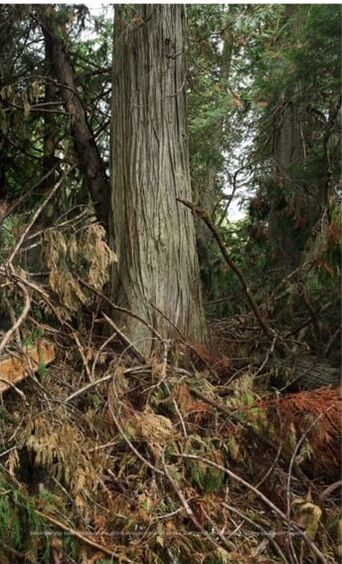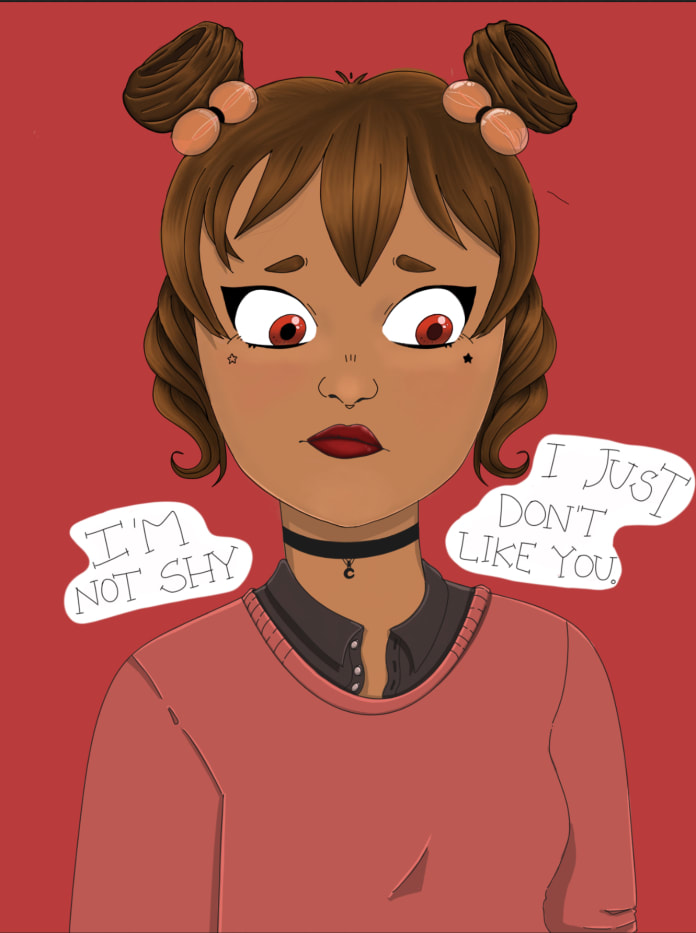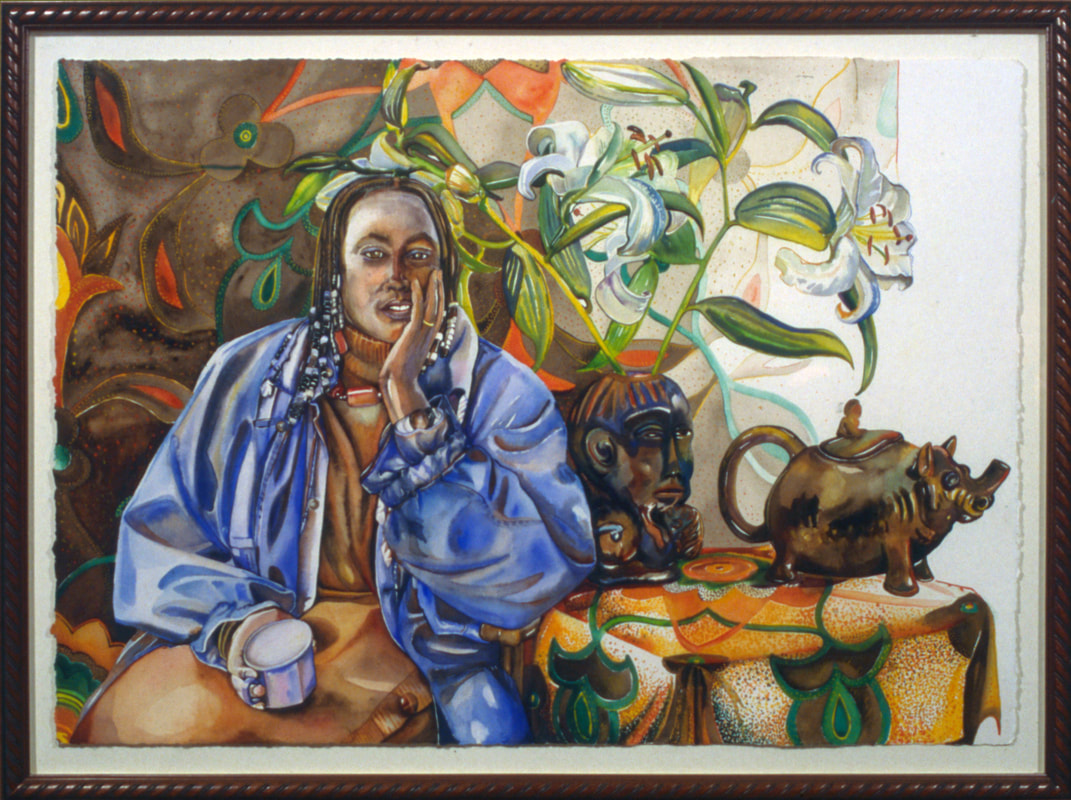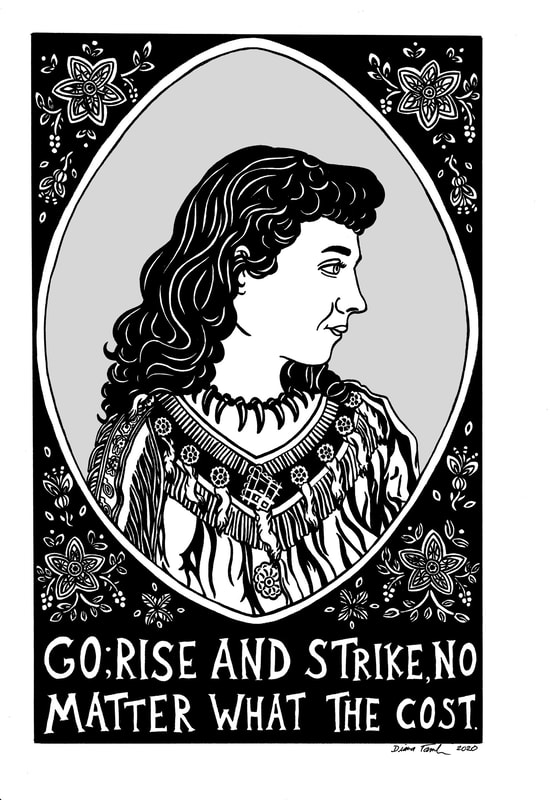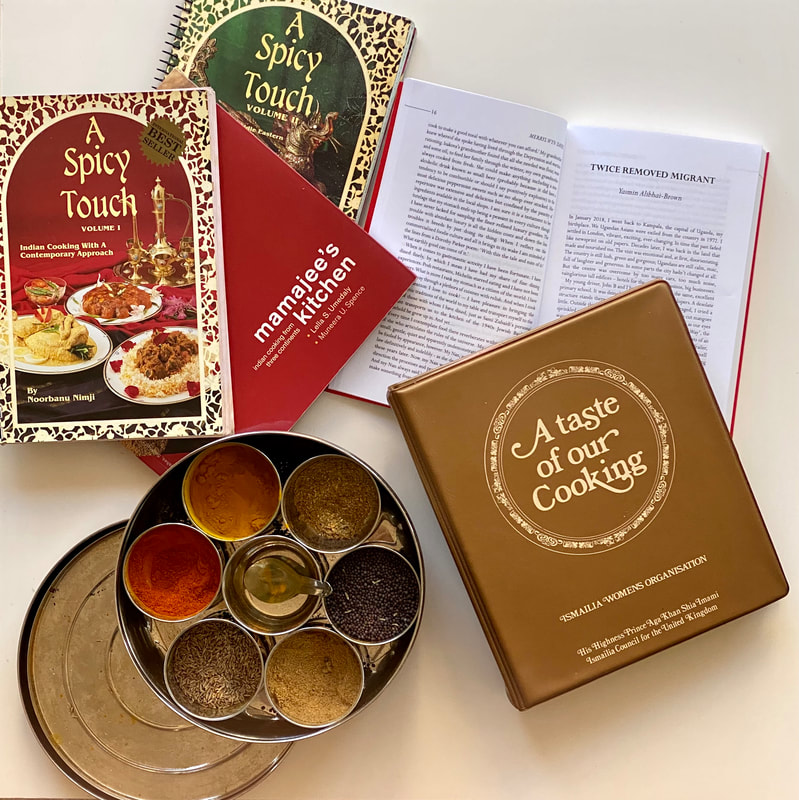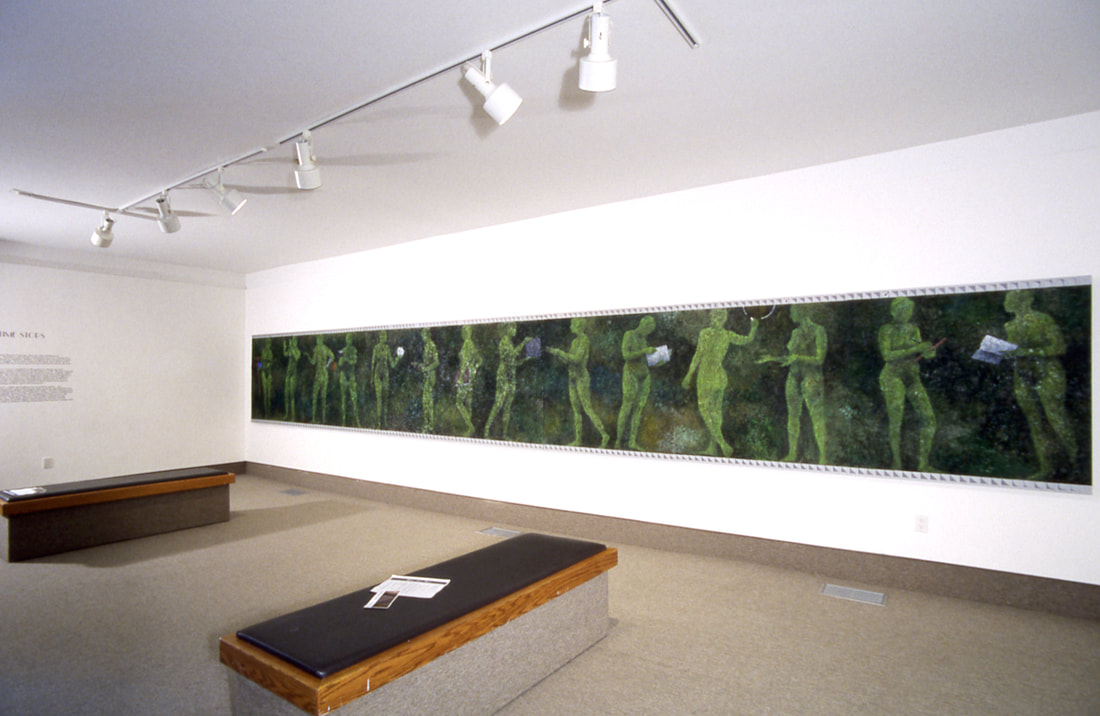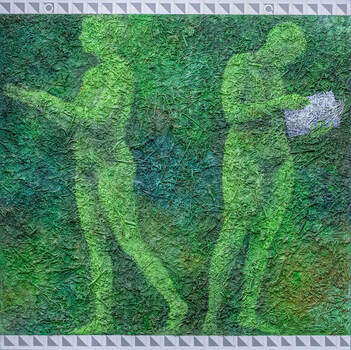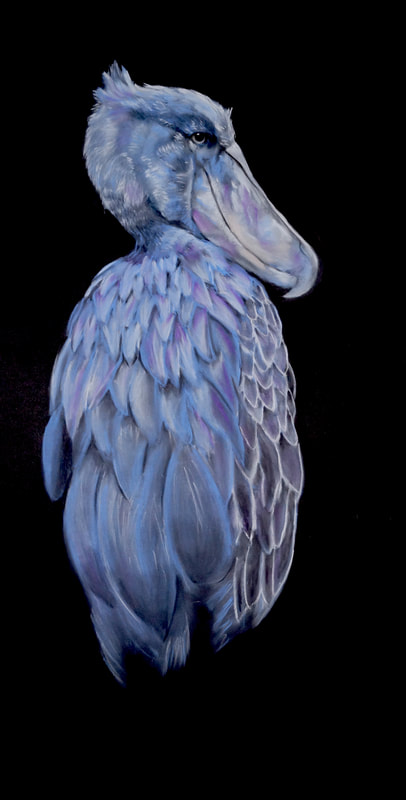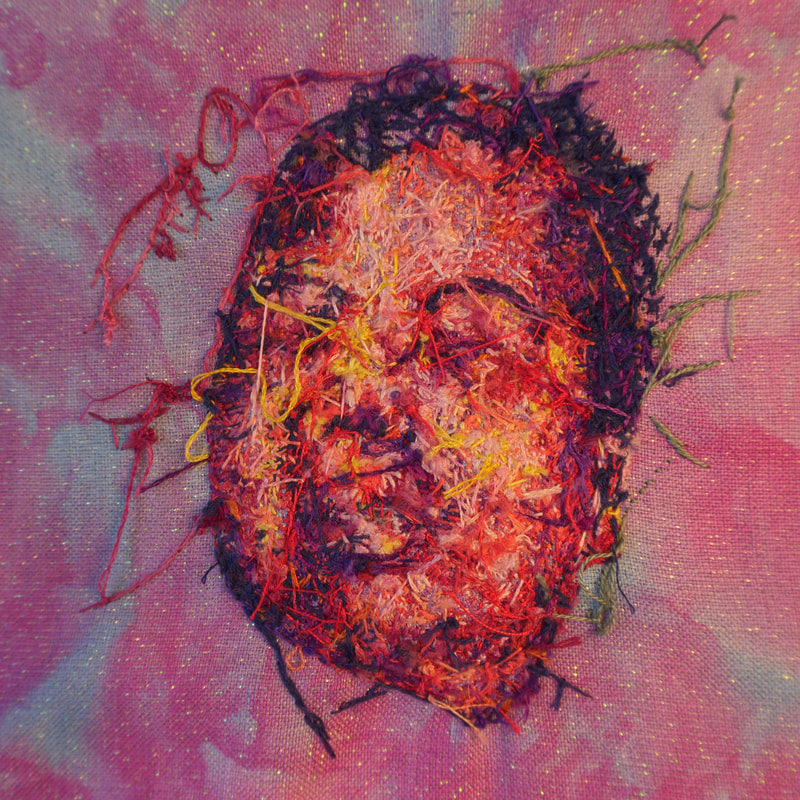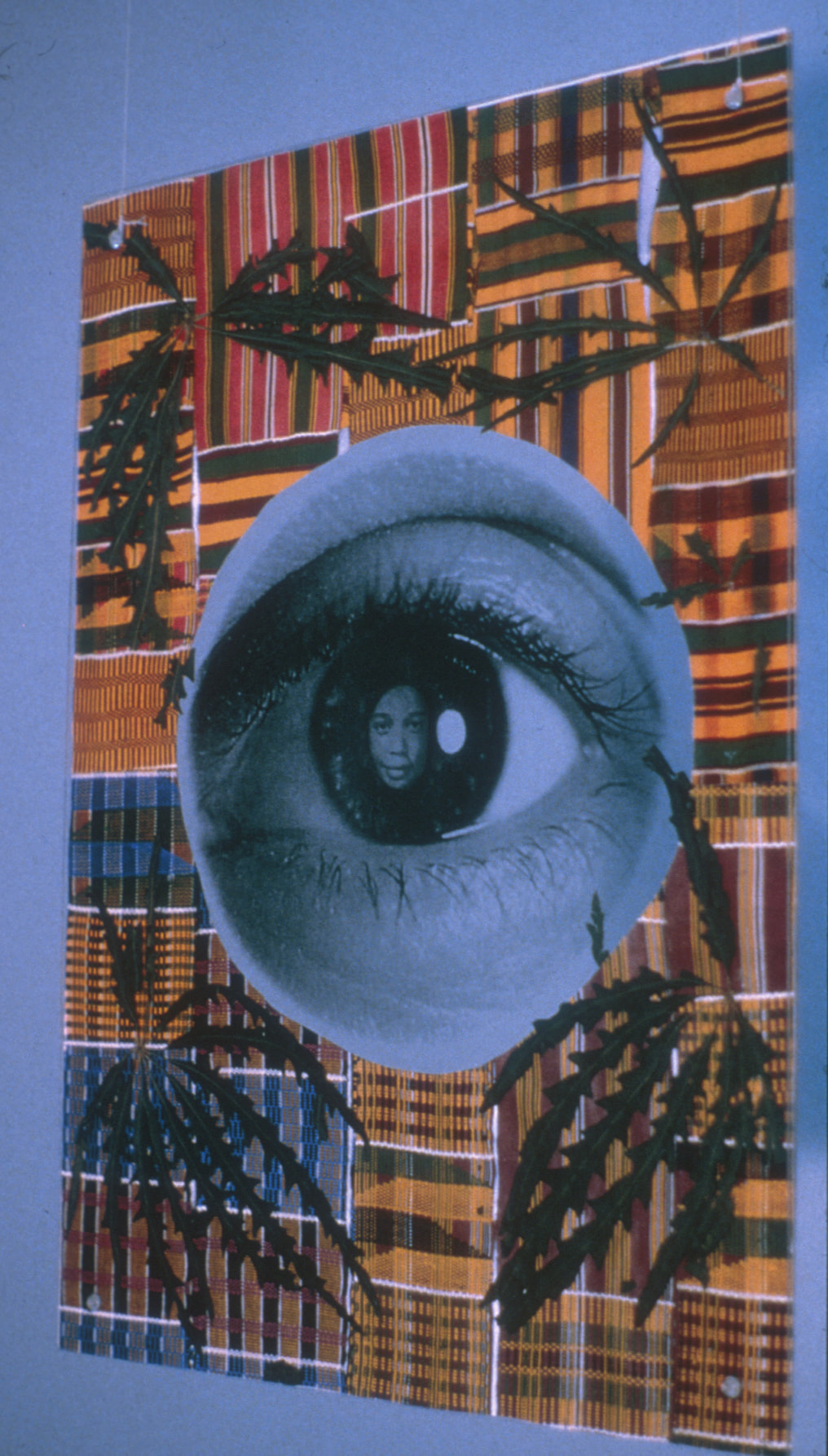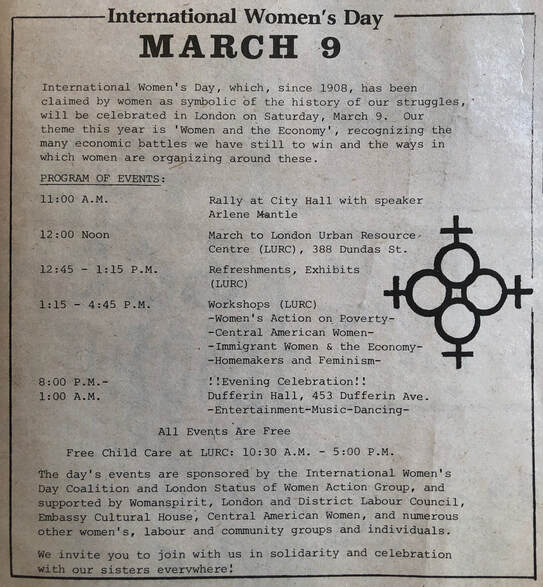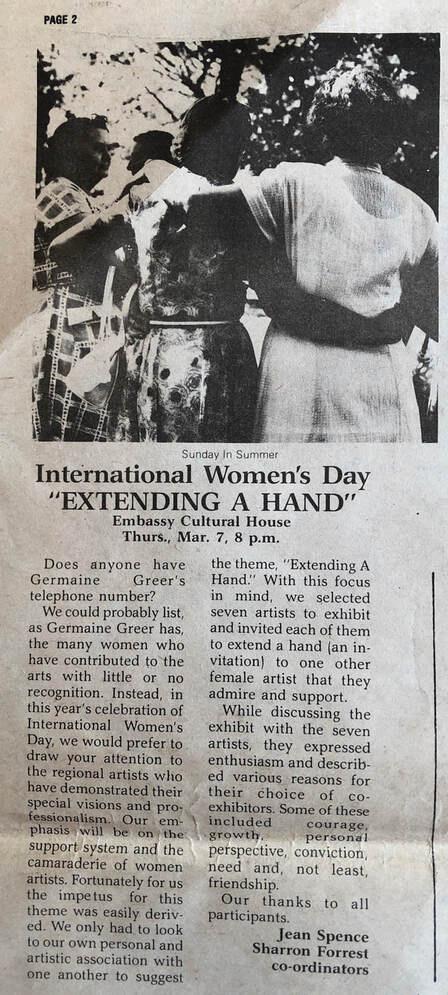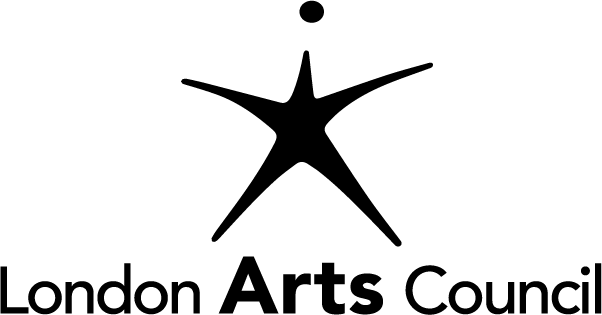International Women's Day Exhibition
IWD Exhibit March 8th, 2021
International Women’s Day is celebrated each year on March 8th. It is a worldwide effort to honour women's achievements, raise awareness about women's equality, lobby for gender parity, and fundraise for female-focused charities. Its seed lies in demonstrations dating to 1908, when 15,000 women marched through New York City to demand shorter working hours, better pay, and voting rights. The first National Women’s Day was called the following year by the Socialist Party of America, and, in 1914, March 8th was formalized as the global day to mark International Women’s Day. In 1975 the United Nations also recognized this day, adopting a resolution stating that all member states must observe a women’s day.
Embassy Cultural House twice hosted an International Women’s Day exhibition. In 1984, exhibitors included kerry ferris, Jerry Grey, Janice Gurney, Freda Guttman, Jean Hay, Wiesia Pikula, Margaret Randall, and Bernice Vincent. In 1985, the exhibition, Extending a Hand, was organized by artists Jean Spence and Sharron Forrest. Participants included Teresa Altman, Jill Andrews, Margaretta Gilboy, Fern Helfand, Betty Heydon, Ethel Horne, Barbara Hyatt, Jean Madison, Wanda Sawicki-Kutac, Thelma Rosner, Nita Ross, Elizabeth Roy, Jennie White and Lotus Why. ECH also published images and texts in the Tabloid at that time, honouring the activities and events around International Women’s Day.
In 2021, Embassy Cultural House virtual artist-run space and community website marks both this longstanding day and its own history by hosting an online exhibition. The project is coordinated by Jade Williamson, with the assistance of Charlotte Egan and Ruth Skinner. Participating artists include some who showed in the original International Women's Day exhibitions presented by the ECH, as well as many more artists who are part of the ECH community today. They include: Jessie Amery, Amanda Boulos, Susan Day, Julie Rene De Cotret, Charlotte Egan, Soheila Esfahani, kerry ferris (1949 - 2016), Mireya Folch Serra, Fatima Garzan, Anahi Gonzalez, Freda Guttman, Jamelie Hassan, Samar Hejazi, Fern Helfand, Sharmistha Kar, Suzy Lake, Catherine Morrisey, Shelley Niro, Thelma Rosner, Niloufar Salimi, Sandra Semchuk, Mackenzie Smith, Jean Spence, Diana Tamblyn, Zainub Verjee, Bernice Vincent (1934 - 2016), Jade Williamson, Michelle Wilson, and Winsom Winsom.
Shelley Kopp, March 2021
M – Stories of Women
by Shelley Niro
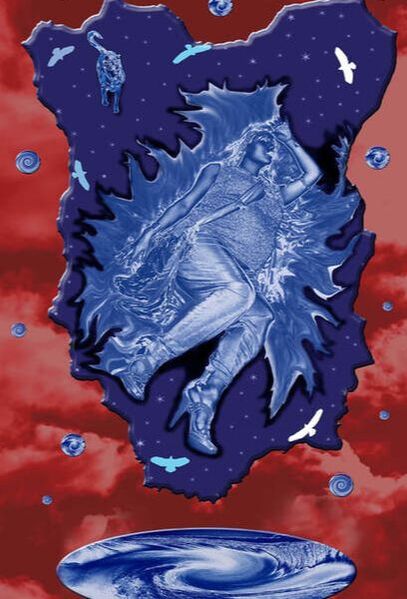 Finding Her Helpers, 2011
Finding Her Helpers, 2011
A certain Haudenosaunee story takes place before modern times. It predates mass communication, telephones or printing presses. The narrative was passed down through oral history, from one generation to another.
The Iroquois story of Skywoman has extended into pop culture. The set-up is this: A young beautiful pregnant woman lives in the night sky constellation known as Pleiades. Sky People do not know illness. They live in a glowing shining world. Something happens in that world where people start to suffer from diseases which leads to their death. They don’t know what to do. They’ve never seen this before.
Skywoman’s dying husband asks her to get him a drink of water from the forbidden Tree of Life. She doesn’t want to see him suffer anymore and makes the trip to the tree hoping it will heal him.
As she arrives, a big gust of wind blows the tree over leaving a hole in the ground where it once stood. The wind knocks her into the hole making her try to grab onto the roots as she falls. In this attempt to grab onto something she grabs strawberry and tobacco plants instead. She begins her long lonely journey through darkness.
Out of an act of love, Skywoman has put herself in danger, going against rules the heavenly society has set up to protect its celestial population. In that one unselfish act she loses her way and ultimately everything. She floats through darkness for what seems like an endless amount of time. She doesn’t know where she is going or how long she will be in this state. Her fear eventually is overcome by curiosity. She begins to look forward to a new life with her unborn child, in a new and distant land.
The title of this exhibition has changed. At first it was going to be called MONSTER. As time went on, that part of the title has been shortened to simply M.
M stands for mother, maternal, matriarchy and ultimately monster.
Monster is a story of women who live in this world. The depiction of Native Women in Canada is bleak. Often the stories are one dimensional and serve only one purpose, to perpetuate Native Women as worthless and disposable often taking away from the common good of this society. Newspapers occasionally make statements about taxpayer’s loss as they are the ones paying for services going towards the livelihood of Native Peoples, notably women and their children.
It is a historical ploy. Traditionally and historically the women were the landowners. They controlled agriculture and the land the produce came from. Their men knew they had no business in these affairs. After contact and colonization, women became dis-empowered through acts of war and displacement. This subtle act of visual aggression remains apparent to this day.
The attention and then the lack of attention for the Missing 500, the attention and then the lack of attention for the lack of good drinking water on Indian Reservations, the attention and then the lack of attention for glue sniffing children on Indian Reservations, North and South, the attention and then the lack of attention of suicide of Native Youth on any Indian Reservation propels any and all to register surprise and then empty promises. These stories are pulled and spread out for daily digestion depending on the political sway and often used as a divergent from the real issue.
The M Project is about water, land and gaining access to these commodities.
Occasionally I imagine how the story of Skywoman was first delivered. Was it a bedtime story? Was it at a biennial? A gathering of storytellers? May the best story win? This wasn’t an ordinary story about wolves in a forest or getting lost in a canoe. This was a story that took place in the stars above. The ability to eye the infinite firmament above, enriches the human soul indefinitely.
I give thanks to my ancestors everyday. I connect with them through my own imagination. The forward thinking of invention and the inclusion of the universe makes being a part of this world doable, positive and believable.
Shelley Niro, 2011
The Iroquois story of Skywoman has extended into pop culture. The set-up is this: A young beautiful pregnant woman lives in the night sky constellation known as Pleiades. Sky People do not know illness. They live in a glowing shining world. Something happens in that world where people start to suffer from diseases which leads to their death. They don’t know what to do. They’ve never seen this before.
Skywoman’s dying husband asks her to get him a drink of water from the forbidden Tree of Life. She doesn’t want to see him suffer anymore and makes the trip to the tree hoping it will heal him.
As she arrives, a big gust of wind blows the tree over leaving a hole in the ground where it once stood. The wind knocks her into the hole making her try to grab onto the roots as she falls. In this attempt to grab onto something she grabs strawberry and tobacco plants instead. She begins her long lonely journey through darkness.
Out of an act of love, Skywoman has put herself in danger, going against rules the heavenly society has set up to protect its celestial population. In that one unselfish act she loses her way and ultimately everything. She floats through darkness for what seems like an endless amount of time. She doesn’t know where she is going or how long she will be in this state. Her fear eventually is overcome by curiosity. She begins to look forward to a new life with her unborn child, in a new and distant land.
The title of this exhibition has changed. At first it was going to be called MONSTER. As time went on, that part of the title has been shortened to simply M.
M stands for mother, maternal, matriarchy and ultimately monster.
Monster is a story of women who live in this world. The depiction of Native Women in Canada is bleak. Often the stories are one dimensional and serve only one purpose, to perpetuate Native Women as worthless and disposable often taking away from the common good of this society. Newspapers occasionally make statements about taxpayer’s loss as they are the ones paying for services going towards the livelihood of Native Peoples, notably women and their children.
It is a historical ploy. Traditionally and historically the women were the landowners. They controlled agriculture and the land the produce came from. Their men knew they had no business in these affairs. After contact and colonization, women became dis-empowered through acts of war and displacement. This subtle act of visual aggression remains apparent to this day.
The attention and then the lack of attention for the Missing 500, the attention and then the lack of attention for the lack of good drinking water on Indian Reservations, the attention and then the lack of attention for glue sniffing children on Indian Reservations, North and South, the attention and then the lack of attention of suicide of Native Youth on any Indian Reservation propels any and all to register surprise and then empty promises. These stories are pulled and spread out for daily digestion depending on the political sway and often used as a divergent from the real issue.
The M Project is about water, land and gaining access to these commodities.
Occasionally I imagine how the story of Skywoman was first delivered. Was it a bedtime story? Was it at a biennial? A gathering of storytellers? May the best story win? This wasn’t an ordinary story about wolves in a forest or getting lost in a canoe. This was a story that took place in the stars above. The ability to eye the infinite firmament above, enriches the human soul indefinitely.
I give thanks to my ancestors everyday. I connect with them through my own imagination. The forward thinking of invention and the inclusion of the universe makes being a part of this world doable, positive and believable.
Shelley Niro, 2011
JESSIE AMERY
This piece was inspired by a 1980 photograph taken by Abd Al Aal Hassan, Heba Enayat Palestinian Heritage House, depicting women dancing at a Palestinian wedding. The photograph was converted to a textile art image using French knots, satin stitch, cross stitch and stem stitch. Traditional tatreez (Palestinian embroidery) patterns on the wedding dresses were representative of ancestry, heritage and family or village affiliations. Motifs passed down from mother to daughter, the patterns and colours used to tell a story. Women tended to wear the dresses that were passed down through their families. |
AMANDA BOULOS
One of my mother’s life lessons was how to clean myself. At some point I realized that all my pits had the ability to smell, and I was ready for the tender reminder that a daily dose of soap and water will do. My mother’s tips on how to tend to my body come with sweet scents, sometimes more rosy, other times more chemical-y. They come with open palms full of liquid, often glittery, creamy, and sometimes pebbly. They leave me feeling polished, invincible—at least for a little while. A mother’s lesson is hard to forget: it fades, but it always reemerges in the most peripheral parts of the everyday. That’s where it lives, safe from being erased or rewritten. |
SUSAN DAY
Future Constellations is a hand-built coil vessel made in my studio during the first pandemic lock-down in late March 2020. I was working through some ideas and images that had been percolating in my mind. In late 2018 I was in a serious hiking accident and spent a night on a high mountain ridge waiting for a helicopter rescue. I focused on the amazing night sky and worked through the constellation maps I had memorized to pass the time and get through the pain. This vessel is now a ‘drawing’ for a large scale tile installation I am currently working on. |
CHARLOTTE EGAN
This piece is inspired by a mixture of horror movie tropes. The first one being the 'final girl' trope, which refers to the last surviving female in a horror movie. This girl is traditionally pure, and never shown to have sex on screen if she is to survive until the end of the movie. However, I wanted to combine this trope with a succubus, or harpy. Visually, I enjoy the emotional confusion and morbid fascination that the succubus gives its viewer. She is above all sexy and terrifying, and irresistible. My own succubus, of course, is more so confronting than she is irresistible, as she's adopted the famous pose taken often by powerful men (see Andy Warhol's Double Elvis, 1963 to see what I mean). Surrounded by ashes (à la Silent Hill, 2006) her weapon is a dagger, as she requires close contact for combat. The final villain that she confronts is the viewers own gaze. |
SOHEILA ESFAHANI
Esfahani’s art practice explores the terrains of cultural translation and investigates the processes involved in cultural transfer and transformation. Returning to the etymological roots of translation as “carrying or bringing across,” her Cultured Pallets series uses shipping pallets to embody and facilitate the notion of cultural translation. These transient installations emerge from her ongoing process of marking shipping pallets with various ornamentation. After exhibiting the work, she returns the pallets to circulation and track them by engaging in correspondence with those who find them. Her installations evoke issues of migration as people, ultimately, function as “bearers” and “translators” of culture in our current globalized state. |
kerry ferris (1949 - 2016)
kerry ferris was a keen observer of nature. While an enthusiastic traveller, she also took pleasure and inspiration in painting scenes close to home. This painting offers a vibrant and energetic view of her garden and the trumpet vine's inter-relationship to the humming bird. The juvenile peregrine falcon which was hanging around her garden during the summer is included in this painting. kerry explored this roundel format in some of her paintings at this time which added to the intensity of the experience in viewing her work. |
MIREYA FOLCH SERRA
This acrylic painting presents a woman in a garden looking at her shadow. The figure of the woman is juxtaposed to an architectural ruin from the Pyrenees in Spain. The inspiration for this painting is from a photograph that I took while visiting my country of origin. |
FATIMA GARZAN
Girl, Strawberry & Rocket is about a young girl who has a strawberry on the corner of her head covering. The delicate heart-shaped strawberry symbolises hope and innocence as she dreams of a better future in a kinder and gentler world despite the tragedy and destruction caused by war and political unrest. |
ANAHI GONZALEZ
In Como Que Estoy Y No Estoy González works with the illegality of Mexican labor in the boulevard of Isidro Lopez, located in the northern Mexican city of Saltillo, Coahuila, to show us a glimpse of the irregularities, adaptability, and mobility of Mexican laborers. The structures photographed are located in parks, sidewalks, and some take part in the street. These structures are in business depending on the time of the day, season, or day of the week; some connect their structures to the city’s electricity illegally. |
FREDA GUTTMAN
This work fuses archival images of the Nakba with lines of text in red from the poetry of Mahmoud Darwish, the great Palestinian poet (1941- 2008). The Nakba of 1948, (‘catastrophe’ in Arabic), created three quarters of a million Palestinian refugees who fled to Jordan, Syria, Lebanon, the West Bank and the Gaza Strip. The haunting, iconic photographic images of the Nakba evoke the suffering they experienced and still do – imprinted forever are the forlorn lines of forsaken people moving over the horizon into the unknown, at the beginning of their long journey into dispossession and statelessness. Mahmoud Darwish himself shared that journey, having experienced imprisonment, statelessness and exile himself. |
JAMELIE HASSAN
It was one of those mornings of summer/fall light - I met with Helen Connell and Judith Rodger for our first conversation about the official portrait of Helen in honour of her time as Chair of the Board of Governors at Western University. We talked about the approach I might take in the painting. We all agreed that the result would be something that should speak - in some way - to Helen’s strong connection between the communities of the campus and the city. Within these spaces is the beauty of nature which she loves, on the campus with its abundant vegetation, a canopy of colours and of course the river which flows through both. |
SAMAR HEJAZI
Samar Hejazi is a Toronto-based multi disciplinary artist. She channels her ancestry through the historical choreography found in craft practices, observing complex conversations and conceptual ideas of social construction and self identification. By using visual perception, repetition, movement, reflection and shadow, she explores the temporal and multidimensional nature of these ideas. |
FERN HELFAND
My partner was mountain biking in the wooded hills near our home in the British Columbia interior, when to his surprise a bundle of feathers fell to the earth in front of him, dropped by a startled, low flying crow. He stopped to pick them up and discovered that they formed a segment of an Osprey wing. |
SHARMISTHA KAR
My studio practice includes research on the idea of mobility, temporality, journey, the gap between neuro-memory and social memory, archive along with the process of hand-embroidery. Culture, mapping, personal identity, labour, landscapes are some areas where my artistic practice developed during the past years. I have become more aware of the role of my studio practice to articulate my social position. |
SUZY LAKE
Making a True Space began in the mid‑nineties as part of a larger series titled Re-Reading Recovery. It was a looking back to review the learning process and those strengths of survival. I prefer the word prevail over survive. I wanted the work to speak of the process of maturity, rather than aging. I am, after all, an older woman, and the "struggle" has changed. |
CATHERINE MORRISEY
To celebrate International Women’s Day I chose this painting, Going For A Paddle. |
JULIE RENÉ de COTRET
THELMA ROSNER
In my work of the past decade, I have been concerned with the subject of refugees and their journeys. |
NILOUFAR SALIMI
But it can also happen, if will and grace are joined, that as I contemplate the tree I am drawn into a relation, and the tree ceases to be an It. Relation is reciprocity. |
SANDRA SEMCHUK
The wider than human provides the context for human stories. The inner landscapes that so readily awake in me as I enter this old growth interior rain forest near Revelstoke, BC is what the late Barry Lopez called a "kind of projection within a person of a part of the exterior landscape." We are profoundly influenced by "where on this earth we go, what one touches, the patterns one observes in nature, the intricate history of one's life in the land, even a life in the city, the wind, the chirp of birds, the line of a falling leave are known." (Lopez) It is in the unexpected meeting place of the inner and the outer landscape that I work to conjure up stories. The text on the photograph reads, "Somehow you have withstood the storm stripping your branches and continue the work of holding your world together". |
MACKENZIE SMITH
This work is an illustration that is part of a series of images, which I turned into screen prints meant to be displayed as posters. This series was meant to bring awareness to verbal sexual assault that is often labelled as “friendly.” This particular illustration was created to bring attention to people who tell young women to smile or mark them as shy as a passive-aggressive insult for not responding positively to their sexual advances. |
JEAN SPENCE
Jane Creider and I immigrated to Canada in the 1970s; Jane was born in Kenya and I in the United States. We formed a close bond and a supportive system that gave roots to our art in Canada, Jane as a ceramicist and author and myself as a visual artist. My interest focussed on the symbolic nature of that cross-cultural duality. Jane sat for the portrait in 1987. Among the artifacts on the table in this watercolour is a ceramic tea-pot created by Jane. |
DIANA TAMBLYN
The past few years I’ve made a concerted effort to educate myself more on Indigenous culture and history. There is so much I don’t know, and it wasn’t a subject that was taught in school when I was a student. |
ZAINUB VERJEE
This artwork pulls focus on the important and critical role that Ismaili Women of my community, and other women generally, play in settlement of migrant communities (Jamat). |
BERNICE VINCENT (1934 - 2016)
Fourteen Women is a frieze-like composition created in homage to the young women who lost their lives in the tragedy of the Montreal Massacre when a murderous attack against women students in the Faculty of Engineering at the Ecole Polytechnique happened on December 6, 1989. |
JADE WILLIAMSON
The Shoebill is a rare prehistoric bird that is critically endangered. With less than 5000 remaining in the population, its lifespan is limited. To illustrate the endangerment of the Balaeniceps rex, I reflected on its extensive lifespan and ancient legends. Though the primitive nature of the Shoebill already embodied this antiquity through its presence. The idea of time and value attached to antiqueness were the same concepts this piece represents. I depicted this beautiful blue species with a regality to emulate the ancientness of this species. |
MICHELLE WILSON
I created embroidery work as part of a partnership with neuroscientist Mahdieh Varvani Farahani. Ultimately, our collaboration resulted in a new media piece that conveys the vulnerable but resilient nature of autobiographical memory by weaving a snapshot in time, Asa's birth story as told by her parents. The video shows the embroidery process used to create this image. Its creation involves layering thread, back and forth repetitively and snipping layers to create a fuzzy texture, both an illustration of iterative memory and a physical ode to fibre tractography imaging. An audio element weaves together mine, and my partner's telling our respective stories, cut and strung together to create a collaborative memory. |
WINSOM WINSOM
This is a detail part of a mixed media installation looking through my own eyes, and wondering if cannabis is able to bring clarity. The piece speaks of insight and far-sighted vision to allow us to peer into ourselves to reach our authentic selves. |
Thank you to all the artists who have contributed to the Embassy Cultural House's 3rd International Women's Day exhibition. I want to express tremendous gratitude towards Jamelie Hassan; she has been a staple in organizing this event and has been essential to its success. She has been so resourceful in reaching out to the ECH community and welcoming new members. Thank you to Ruth Skinner and Charlotte Egan for using their skills and connections to help coordinate this event.
This is the first virtual exhibition I have coordinated, and it has been a wonderful learning experience. I truly enjoyed being introduced to the many talented artists participating and being exposed to such meaningful art. This exhibition has come together beautifully in appreciation for and awareness of an important day. It is a blessing to be a part of this ECH community and watch it grow as we host these events that bring people and their passions together. The beauty of this show is not only the art but the messages the artists have to share. It has been my honour to coordinate an inter-generational exhibition involving younger artists at the beginning of their careers and internationally recognized artists. The value of this exhibition is that it lives on beyond International Women's Day, March 8, 2021. One day is not enough to celebrate the achievements of women and to recognize their challenges. Therefore, the infinite life in its virtual existence - makes this exhibition forever our toast and tribute to women everywhere.
Jade Williamson, March 2021
This is the first virtual exhibition I have coordinated, and it has been a wonderful learning experience. I truly enjoyed being introduced to the many talented artists participating and being exposed to such meaningful art. This exhibition has come together beautifully in appreciation for and awareness of an important day. It is a blessing to be a part of this ECH community and watch it grow as we host these events that bring people and their passions together. The beauty of this show is not only the art but the messages the artists have to share. It has been my honour to coordinate an inter-generational exhibition involving younger artists at the beginning of their careers and internationally recognized artists. The value of this exhibition is that it lives on beyond International Women's Day, March 8, 2021. One day is not enough to celebrate the achievements of women and to recognize their challenges. Therefore, the infinite life in its virtual existence - makes this exhibition forever our toast and tribute to women everywhere.
Jade Williamson, March 2021
Banner Image: Diana Tamblyn, Go; Rise and Strike, Tekahionwake, 2020
